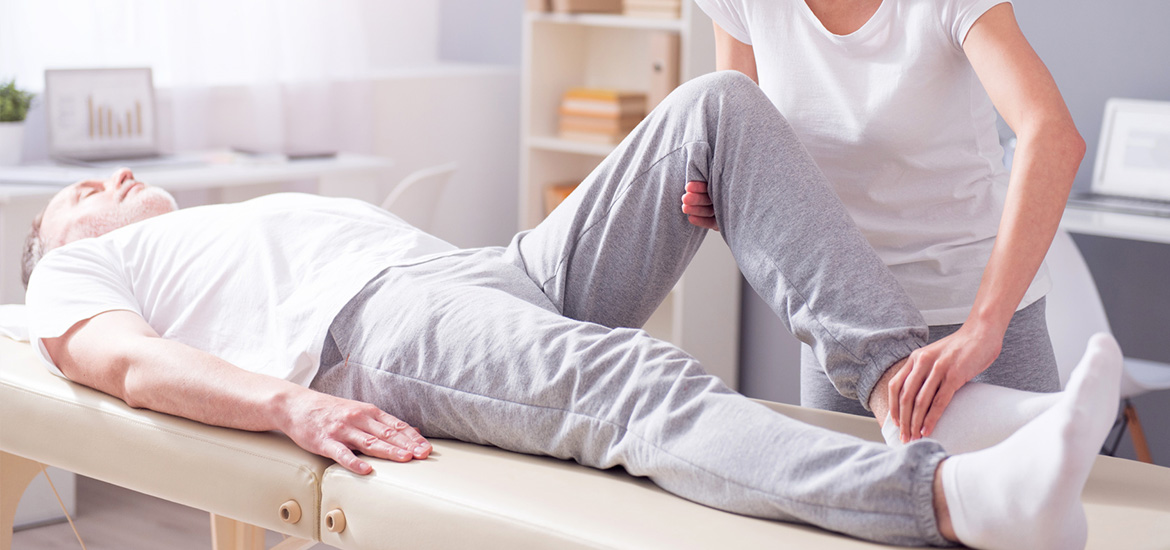What is the ACL?
One of the major four knee ligaments, the anterior cruciate ligament (ACL) is critical for knee stability, functioning to control joint mobility and prevent abnormal knee motion.
The ACL is located within the knee joint and connects the front of the proximal tibia (located just below the knee joint at the upper aspect of the shin bone) with the back of the distal femur (located just above the knee joint at the lower aspect of the thigh bone).
SUMMARY
In this article you will learn what the ACL ligament is, the signs, symptoms and how to diagnosis of a torn ACL. You will learn how surgery is performed and how you can both prevent and recover from an ACL surgery.
Causes of a torn ACL
ACL injuries are often sport-related. About 80% of these tears are non-contact, occurring when abnormally pivoting or landing awkwardly from a jump. Once the ACL is torn, the knee losses stability and in some cases this injury may be combined with other forms of ligament damage.
Female athletes tend to be particularly vulnerable to ACL tears when involved in sports. It’s not exactly clear why women are more susceptible, it could be a range of factors including strength, biomechanical and hormonal difference.
Anterior cruciate ligament injuries frequently occur as a result of sports involving pivoting, cutting, and sudden direction changes. These high demand activities can include rugby, football, touch, netball, tennis, basketball, volleyball, dance, hockey, and gymnastics; among many others.
While it can be possible to function with a damaged ACL, maintaining athletic performance can be challenging. Many professional athletes are forced with the choice of undergoing surgery to try and return to their previous fitness levels, or retire early.

Signs, symptoms and diagnosis
A torn ACL is often associated with injury sustained to the knee while playing sport. In some cases the patient may hear a “popping’ sound in their knee and they may lose stability. ACL tears can cause significant pain and swelling of the knee. This is typically followed by stiffness and difficulty bearing weight.
Severity grades
Anterior cruciate ligament tears are graded based on their severity. This also helps to determine the recommended treatment and recovery plan. The gradings are as follows:
Grade 1
Mild ligament tear, with full function remaining.
Grade 2
Moderate ligament tear and moderate loss of function.
Grade 3
Full rupture and loss of function.
A clinical knee investigation will helps to determine the presence and severity of the injury. There are special ACL stress tests that are used to detect a tear or rupture. A MRI may be required to determine the extent of the injury and if other problems are present, such as meniscus damage and bone bruising. Rarely are x-rays used in the diagnosis of an ACL tear or rupture.
Treatment options for a torn MCL
The goals of treating a torn ACL are to restore stability to the knee and restore the same functionality as before the injury. In some cases it’s possible to return to pre-injury mobility. In treating a torn ACL, physicians also aim to prevent injuries to other structures within the knee and reduce the risk of developing osteoarthritis.
A recent literature review concluded that there is no evidence-based argument that supports a systematic surgical knee reconstruction following an ACL tear[noteDelince, P. and Ghafil, D. (2012). Anterior cruciate ligament tears: conservative or surgical treatment? A critical review of the literature. Knee Surgery, Ports Traumatology, Arthroscopy. Volume 20, Issue 1, (pp. 48-61)[/note]. Reviewers confirmed that both neuromuscular rehabilitation and surgical reconstruction can be beneficial and that each injury should be assessed case by case. How an ACL injury is treated will be determined by a wide range of factors, including ages, sports participation, degree of knee instability, and future goals.
Not all ACL tears require surgery. A physical rehabilitation program may be all that’s required to treat the injury. These programs will include a range of flexibility and strengthening exercises, as well as endurance activities. Agility and coordination training may also be recommended for competitive athletes. Other treatment options may include:
There are a wide range of products available to help support ACL recovery including but not limited to resistance bands, supportive/protective tape, swiss balls, self massage foam rollers, and hot or ice packs.

MCL surgery
Surgery for an ACL tear typically involves an arthroscopic reconstruction as it’s rarely possible to repair the ligament itself. There are a range of graft sources and different surgeons will have different preferences. A common choice is a hamstring tendon because they are strong and will integrate quickly and have low donor site morbidity.
Patellar tendon grafts are also used. This method involves using a small strip of the patella tendon and bone to graft. The bone helps to block the ends of the graft to securely lock in the new position. Compared with using a hamstring tendon, a patellar tendon is less likely to stretch.
In addition to autograft techniques, other options include allographs and Ligament Advanced Reinforcement System (LARS).
An allograph is a form of transplant surgery using tissue from a deceased organ donor. It’s not widely practiced, although popular in some countries such as the United States.
A relatively new technique to treat torn ligaments is LARS. Using a synthetic ligament composed of polyethylene terephthalate, this graft is threaded through the ends of the torn ACL.
The aim is to encourage new cells to grow within the woven synthetic ligament to act as the frame for new tissue growth. The advantages of this technique are that the surgery is simpler and there is no need to harvest grafting tissue. It is more like a repair rather than a reconstruction. In some situations LARS may be used in addition to conventional hamstring reconstruction.
This video shows an ACL reconstruction using the LARS technique.
Since LARS is a relatively new technique there are very few long-term follow up studies that can compare the effectiveness of this treatment with others. One key advantage is that there is no donor site mortality when undergoing LARS surgery.
Roe and colleges reported after a 7 year follow up, 14% of four strand hamstring (4HS) and 38% of bone patella tendon bone (BPTB) graft patients experienced donor site symptoms such as irritation, numbness, or tenderness1. Recovery times can be as early as three months following LARS surgery. This is faster than the six to twelve months associated with other grafts.
Other studies show that at least in the short term, LARS provides increased knee stability in anterior translation compared with 4HS, and the overall activity level is comparable between the different grafts2.
In the short-term, there doesn’t appear to be any major difference in failure rates. In a five year follow-up, Gao and colleagues reported only a 6% complication rate, which is comparable with other grafting techniques3.
Further long-term observations are necessary to determine the full benefits and disadvantages of using LARS as a modern means to reconstruct the anterior cruciate ligament.
Prevention and recovery
Knee ligament injuries are hard to prevent, especially if involved in competitive sports. However, there are some measures that can be taken to help reduce the risk, such as:
Education
Knowing how to correctly land or fall can assist in the prevention of MCL injuries. For example, falling sideways or forward rather than backwards can help to reduce the stress on knee joints. People participating in sports such as skiing, basketball, football and soccer should practice landing/falling correctly as part of their training.
Stretching
Muscles and ligaments should be prepared for aerobic activity by engaging in proper warm-ups. This helps to minimise any shock from sudden motion. Three to five minutes of light aerobic exercise is usually sufficient. Stretching the muscles around the knee after exercise is also important for preventing tightening of the MCL during recovery.
Strengthening
Maintaining strong muscles around the ligaments and knee joint can help to reduce the strain on the MCL. Strong quadriceps muscles are particularly beneficial. Located above the knee, these muscles are used in running and can be strengthened with squats and lunges.
Rest
The MCL can wear out and be stretched over time. Thus, it’s important to allow the body time to recover. Alternating between high and low-impact activities can help to minimise the strain on the knee.
For more information about protecting the knee from ligament injury, read our article on torn medial collateral ligament (MCL).

Nutrients supporting ligament recovery
Any ligament tear will cause inflammation and it’s important to properly manage this to promote healing and recovery. Proteolytic enzymes are particularly important due to their anti-inflammatory properties and their ability to clear away protein exudates from the injury.
These enzymes fall into two main groups: vegetable based (such as papin and bromelain) and animal based (such as chymotrypsin and trypsin). Zinc, vitamin C and bioflavinoids are also very important inflammation inhibitors and will help to promote healing and tissue regeneration.
Maintaining a diet rich in lean protein (chicken, fish, and red meats), fresh citrus, dairy and vegetables will help to support injury recovery. Many nutritionists also recommend limiting sugar, alcohol and caffeine intake during this recovery period. There are also a range of supplements that can help to accelerate the healing process.
Bibliography
- Roe, J. et.al. (2005). A 7-Year Follow-up of Patellar Tendon and Hamstring Tendon Grafts for Arthroscopic Anterior Cruciate Ligament Reconstruction: Differences and Similarities. American Journal of Sports Medicine, Volume 33, Issue 9, (pp.1337-45)
- Zhang, L. et.al. (2010). Four-strand hamstring tendon autograft versus LARS artificial ligament for anterior cruciate ligament reconstruction. International Orthopaedics (SICOT), Volume 34, Issue 1, (pp. 45–49)
- Gao, K. et.al (2010). Anterior Cruciate Ligament Reconstruction With LARS Artificial Ligament: A Multicenter Study With 3- to 5-Year Follow-up. Arthroscopy – Journal of Arthroscopic and Related Surgery, Volume 26, Issue 4 (pp. 515-523)







